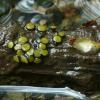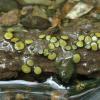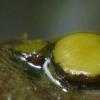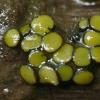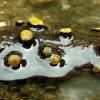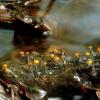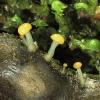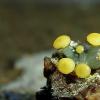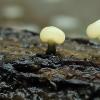
28-05-2015 23:03
 Bernard CLESSE
Bernard CLESSE
Voici ce que je pense être Vibrissea flavovirens�

29-05-2015 00:31
 Jenny Seawright
Jenny Seawright
Hello all, Lichenicolous fungus on on the thallus

24-05-2015 19:53
 Alessio Pierotti
Alessio Pierotti
I apologize now for my request.This time I do not

28-05-2015 15:24
 Nicolas VAN VOOREN
Nicolas VAN VOOREN
An Australian colleague (Heino Lepp) submits a col

27-05-2015 22:16
 Zuzana Sochorová (Egertová)
Zuzana Sochorová (Egertová)
Hello,I often have troubles with determination of

24-05-2015 21:51
Eduard OsieckRecently Splanchnonema quercicola and Pleomassaria

16-05-2015 08:20
Me envian foto desde GaliciaComo voy a estar fuera
Vibrissea flavovirens ?
Bernard CLESSE,
28-05-2015 23:03
 Voici ce que je pense être Vibrissea flavovirens récolté sur branche pourrie et imbibée dans un ruisseau.
Voici ce que je pense être Vibrissea flavovirens récolté sur branche pourrie et imbibée dans un ruisseau.Malheureusement, je n'ai pu faire la microscopie à temps, les exemplaires sont complètement pourris maintenant.
Qu'en pensez-vous ?
Bernard
Lothar Krieglsteiner,
28-05-2015 23:06

Re : Vibrissea flavovirens ?
Hello Bernard,
I agree fully: this is V. flavovirens. Other species are not so yellow.
Regards from Lothar
Peter Püwert,
29-05-2015 01:24
Bernard CLESSE,
29-05-2015 06:48

Re : Vibrissea flavovirens ?
Hello Lothar and Peter,
Thank you for your information and confirmations !
Sincerely,
Bernard
Thank you for your information and confirmations !
Sincerely,
Bernard

